Michael Weinstein is a seasoned writer and a dedicated expert in work safety, footwear, and popular shoe brands. With years of research and expertise, he's...Read more
Michael Weinstein is a seasoned writer and a dedicated expert in work safety, footwear, and popular shoe brands. With years of research and expertise, he's...Read more
Logger boots are the perfect work boots for both rugged and muddy terrains. They are resilient, durable, and safe enough to keep the work going. Though they are mainly used by the loggers, they are fit enough for construction sites. However, construction sites are full of different surfaces. Mostly on the concrete surface, the boots have to provide excellent traction for proper stability.
The logger boots, in this case, come with perfect slip-resistant outsoles and safety features. And, in concrete, they perform better as well if it matches with your arches perfectly. So, further discussions will tell you more on the query, “are logger boots good for concrete?”. Also, will give you a clear idea of every ins and outs of the logger boots.
What Are Logger Boots?
As the name suggests, logger boots are boots made for professional workers who are involved with logging. But they are also famous in other occupations due to their sturdy and durable build.
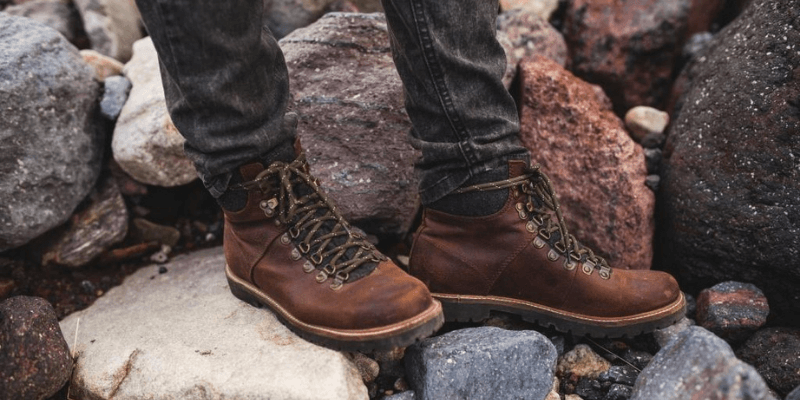
Furthermore, these boots can withstand extreme weather conditions, slippery surfaces, and marshy ground with excellent traction. Some also come with protective features like electric shock resistance, thermal insulation, safety toes, etc.
Key Feature of Loggers Boots
Logger boots offer various features to protect your feet from harsh weather and help you move easily on uncomfortable surfaces. So, take a glance at some of the necessary ones.
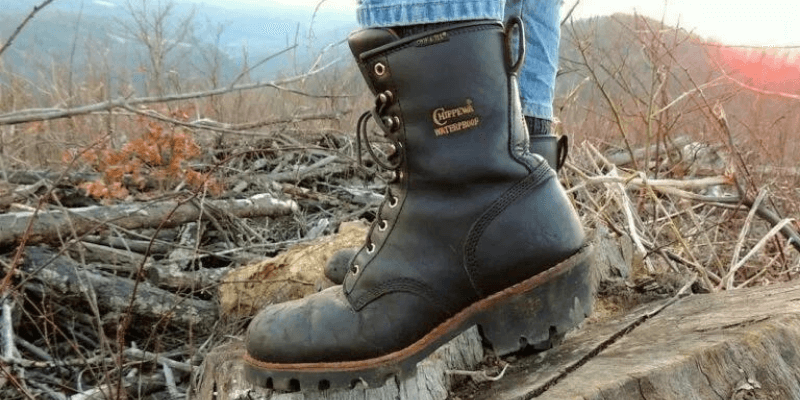
Raised Heel
The 2-3 inches high heel are often made of rugged rubber, and it provides enough groove to mount the climbing spurs. However, according to OSHA, there were 320 fatal falls in worksites out of 1,008 construction fatalities in 2018. Raised heel with a 90-degree ladder lock can prevent these casualties.
Kiltie
A “kiltie” is an additional piece of paneled leather coating attached at the bottom end of the laces. It works as a mudflap to guard the laces and tongue against water, mud, and debris.
Outsole Pattern
Logger boots come with an aggressive lug pattern outsole that provides superior traction in uneven terrain. In addition, they are far better than conventional work boots when it comes to slip resistance. Also, these slip-resistant outsoles ensure extra protection in wet conditions.
Protection
Logger boots are generally waterproof with rugged leather as loggers face heavy rainfall and muddy terrains. Some boots are even fire-resistant. Also, these pairs of boots come as steel-toe boots or composite-toe protection to prevent impact from heavy machinery and logging tools.
Construction
Most boots feature Goodyear welted construction, which is perfect for water resistance, durability, and longevity. The boots featured with such construction features different layerings and strong stitching in the edges.
Ankle support
Most comfortable logger boots come with 8″ to 9” high ankle support with lace fitting. This rigid support helps you keep a natural ankle position and protects your feet from moisture, debris, and bug bites.
Steel Shank
A shank is a supportive layer beneath the insole that supports feet arch. Most logger boots feature a steel shank to protect your feet from sharp objects and provide stability on rough terrain.
Who Wears Logger Boots?
The number of logger boot users maybe not be that long, but many people who work outdoors prefer to use them. However, Lumberjacks are the prime beneficiary of logger boots. These boots are packed with all the necessary features for harvesting and transporting trees.
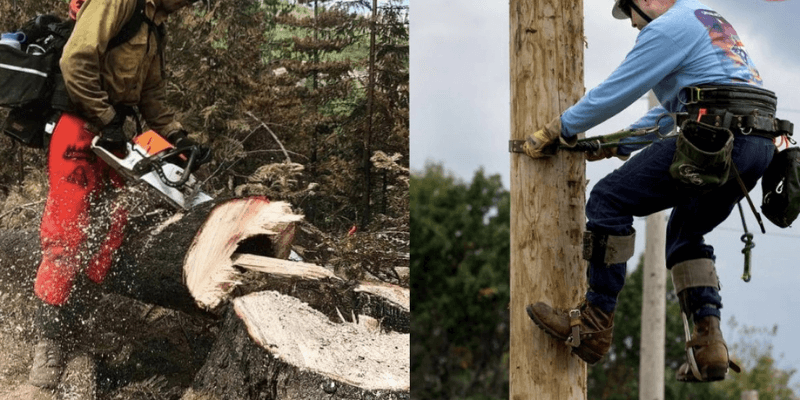
Also, the linemen use such a pair of boots. Those boots aggressive rug pattern with raised heels is perfect for climbing ladders and electric poles.
Besides, ranchers and farmers use these rugged leather boots as they are waterproof and work on any surface type. As well, these boots make good riding boots as the raised heel prevents slipping through the stirrup.
Additionally, construction workers don’t usually wear logger boots. But, they are a great alternative if the soil is initially muddy or the work requires frequent climbing.
Are Logger Boots Good for Concrete?
Well, it entirely depends on the user. Concrete is a flat surface, so it’s better to wear steel-toe concrete boots. These boots are lightweight and way more comfortable than logging boots. However, in certain circumstances, logging boots are more effective in concrete than work boots.
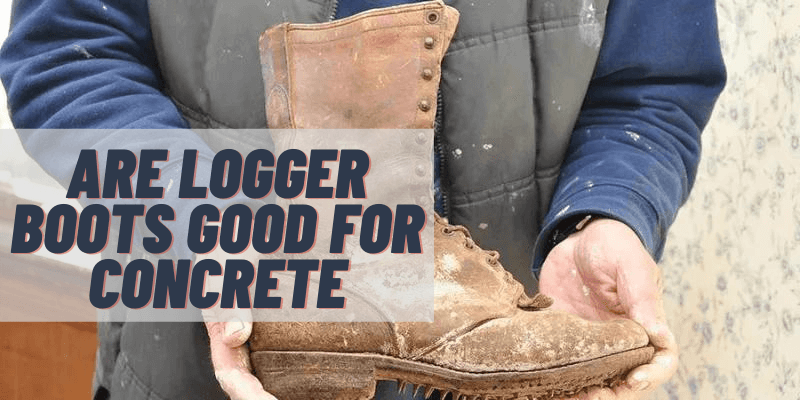
So, imagine working in a construction site where the surface is not yet smooth, but you have to move around quite a lot. Work boots will eventually wear out and result in foot fatigue. In this case, logger boots are the best option available.
Also, logger boots are the safer option if the job requires climbing the ladder often. Besides, some job requires heavy lifting, increasing the chances of accidents. Logger boot has high ankle support and shoe shanks to save your feet from colliding with sharp or heavy objects.
However, wearing a logger boot on smooth concrete is not a good idea if you have to walk all day long.
Difference Between Logger Boots and Work Boots
Most logger boots are waterproof, where work boots are generally water-resistant. As it happens, there are some fundamental differences between the two terms, which are very easily explained here.
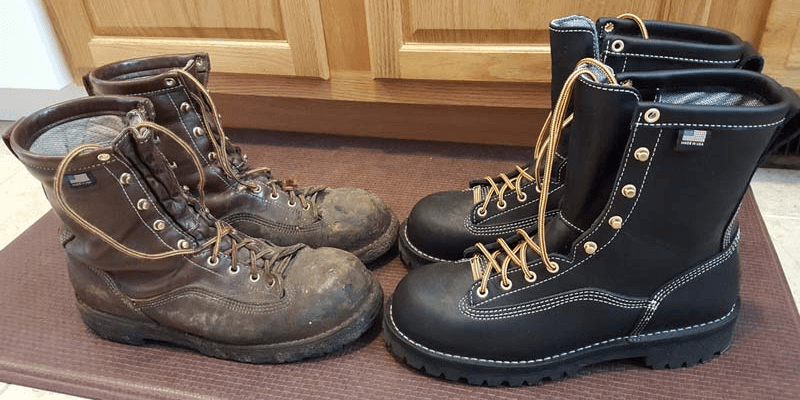
Logger boots are not among the best suitable footwear for indoor use. However, if you work in a manufacturing company, chemical lab, or any other indoor factory, then work boots will suit you best.
Again, almost all logger boots have very high ankle support to protect your feet from side impacts, debris, and bug bite. Work boots are relatively short in height as bugs, debris, or mud are not workers’ faces indoors.
Frequently Asked Questions
As logger boots are a long-time investment, it’s only natural that you still have some doubts. So, here I will answer a few common questions to ease your mind.
Why do logger boots have high heels?
The raised heel makes logger boots perfect for climbing spurs or spikes. It also provides a better grip and traction for using ladders and walking on the forest floor.
Are logger boots good for construction work?
It depends. Usually, urban construction sites require working on flat surfaces. But, logger boots help out a ton with muddy and damp construction work in rural areas.
Can I go hiking in logger boots?
You can, but I highly recommend you not to. Logger boots are not suitable for long-distance walking, and you’ll start feeling very uncomfortable real quick.
Are logger boots comfortable?
Yes. Logger boots are comfortable for heavy-duty jobs like logging, ranching, and surveying. In addition, they provide enough ankle and arch support to relieve foot fatigue and protection from any outside impact.
What are the most famous logger boot brands?
Some of the popular ones are Chippewa, Danner, White’s, Timberland, Thorogood, etc. All these brands feature their trademark technologies to deliver you the best boot possible.
Final Words
A pair of logger boots are a heavenly blessing for any professional worker in the logging industry. These boots have now crossed the forest boundaries and constantly making their use known in other sectors as well. You can even wear logger boots on concrete if that’s what the situation demands. But proper maintenance is a must to get the utmost benefit in any work environment.
Logger boots are a bit expensive than work boots. But they are worth every penny for their long-lasting service. So, consider logger boots as a smart investment to keep you safe and free of injuries.
Recent Posts
Puma sneakers have different sizing depending on the specific style and model. It's recommended to check the product description or reviews for each sneaker to determine if they run small or large....
How To Lace Puma Shoes? If you're a fan of Puma shoes and want to learn how to lace them, you've come to the right place! Lacing your Puma shoes properly not only adds a stylish touch but also...
